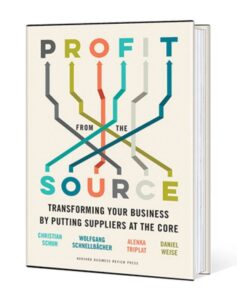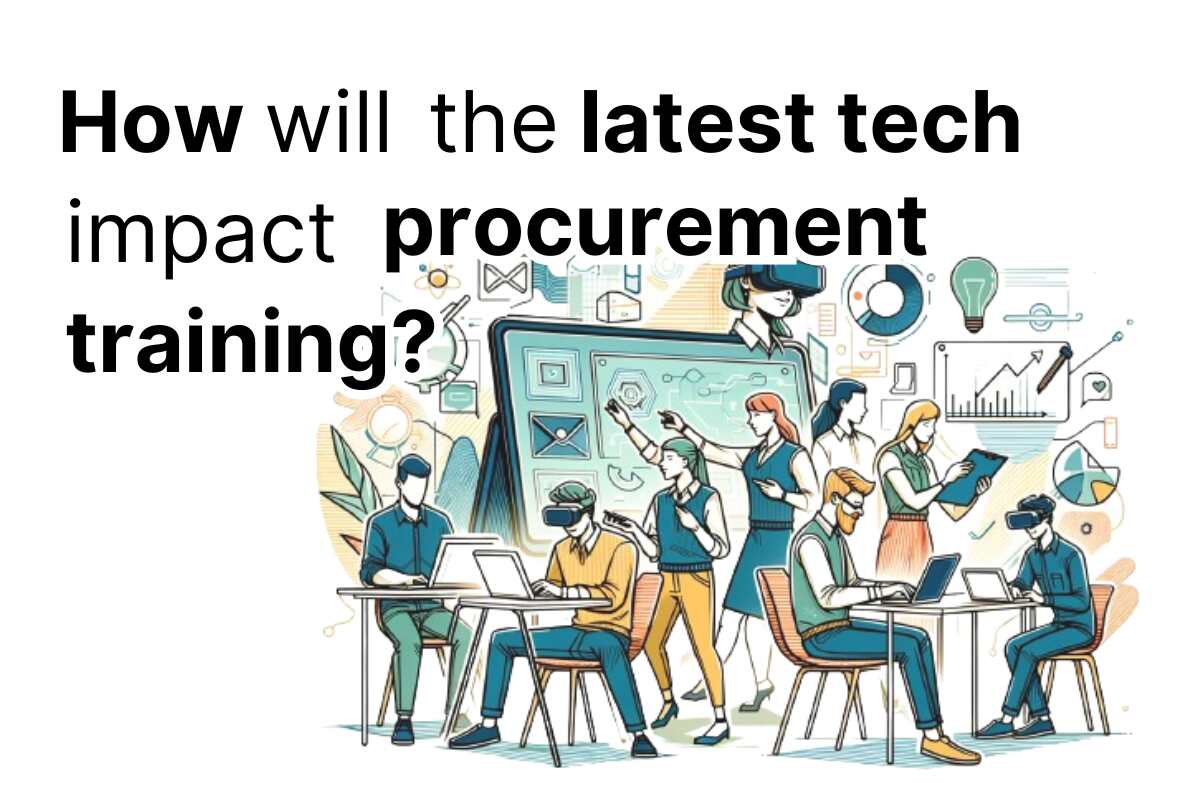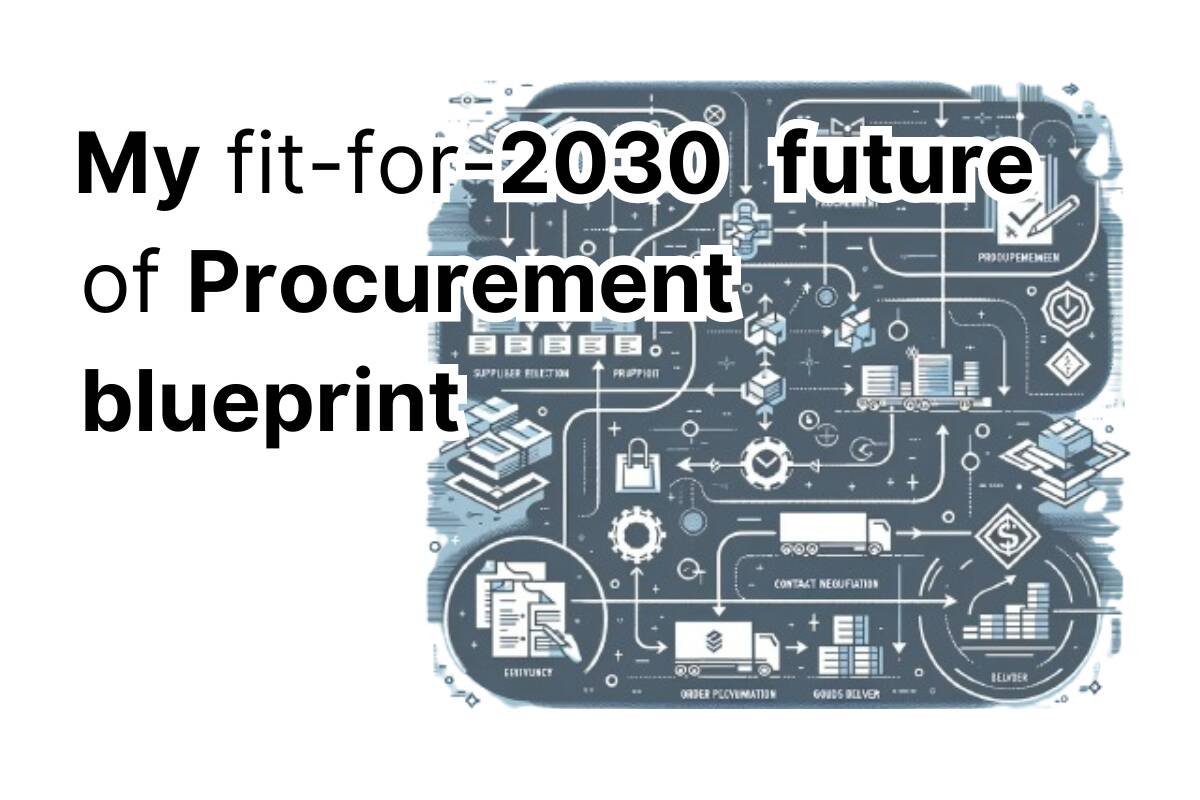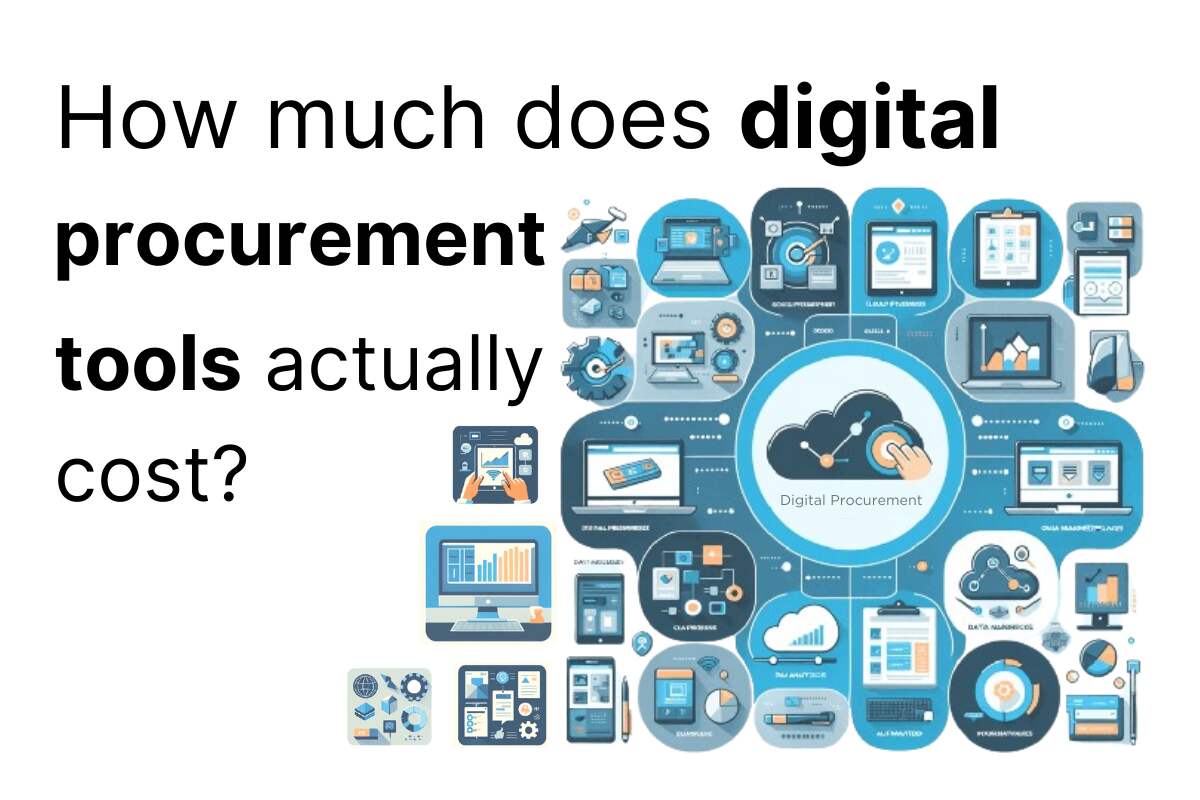Procurement excellence is a hot topic these days. If Procurement is to deliver more with less, it’s essential that we get the most out of the resources we do have.
Part of this is ensuring that we operate effectively through our optimised stakeholder and supplier relationships. If we’re to deliver the increasingly challenging expectations of managing the supply base, we need to have executive level sponsors and world class management of our strategic suppliers.
Back on Series 2 of The Procuretech Podcast, I had the opportunity to interview Dr. Wolfgang Schnellbächer, BCG Managing Director and Partner of their European procurement practice.
He’s a co-author of Profit From The Source.
The recently published book looks at a 10 building blocks to ensure that procurement is both seen as a strategic function, whilst also leveraging the best from its relationships with an organisation’s core suppliers. Link to the episode below.
Profit from the Source: BCG’s 10 Step Plan to deliver Procurement Excellence
It starts off by introducing Tim Cook of Apple as being something of an anomaly. Anointed by Steve Jobs to take over as CEO in Aug 2011, he was one of very few CPOs who’s made the ultimate career step. Very few CEOs come from Procurement or Supply Chain.
In a world of hyper connectivity created by rampant globalisation, Apple had shown itself to be a master of procurement, working with suppliers around the world to create the highest quality and most innovative products, all for the best price.
The introduction goes on to highlight that Apple is one of very few companies that puts procurement at the heart of everything that it does.
One of the biggest things that sets it apart – how it puts its suppliers at the core of the business – has been broadly disregarded by most major corporations.
Word! Big tech gets it. Where they lead, seemingly others, well, haven’t quite followed yet.
Hence the book!
Do CEOs really understand the benefits of procurement excellence?
According to an HBS study, CEOs spend less than 1% of time with suppliers. Ergo, they pretty much never think about procurement. But this is a massive disconnect when we consider the portion of a company’s revenue that is spent on goods and services from external suppliers. It’s more than half in most companies.
Procurement, it seems, is misunderstood by the very people who sit at the top of the tree in most companies. And yet, commercially literate boardrooms should really be putting it at the heart of the company. Excellence in procurement is not just about the well-estabished pillars of strategic sourcing and delivering annual cost savings.
Organisations must focus on bottom line cost reduction and top line growth at the same time. It’s necessary to both increase sales growth and the overall profit margin.
Which leads nicely to some analysis that BCG performed when researching the book. It showed that companies with CPOs on their leadership teams had share prices which had outperformed the market by roughly 130%.
So, if the benefits of a high-performing procurement team seem to be obvious, let’s look at the 10 steps that BCG sets out in Profit From The Source to drive this forward.

1. CEOs must see procurement as being strategic, not administrative
The first step speaks directly to CEOs themselves. Even with the most talented procurement function, you’re never going to achieve true potential without the CEO as a key sponsor. The heart of this lies with procurement functions being seen as strategic, not administrative.
This is a company vision and mindset challenge. The CEO must therefore take personal ownership of this change.
The book suggests that CEOs should spend 25% of their time thinking about suppliers and participating in procurement activity. Supply Chain should become one of the top agenda items on board level meetings.
CPOs need to have a presence on executive boards. The fabled “seat at the table”.
Focus must shift away from just short-term price driven savings activities and more towards helping to deliver profitable growth on the top line. Of course, as we will show in Step 5, the need to deliver cost reduction isn’t going anywhere either! It will always be a core procurement objective; just not the only measured objective.
Thus, there is a need to tap into other sources of competitive advantage besides cost reduction. As we’ll explore, this involved challenge your suppliers and discovering which of them are capable of stepping up. But, most of all, the CEO must give the CPO the mandate and the political cover upon which he/she can deliver.
2. Treat suppliers as your allies, not combatants
Suppliers are not the enemy. There should be less focus on category management and more focus on the top level relationships with the company’s largest and most important suppliers.
The book gives the example of Bosch in the automotive industry, with them spanning multiple categories. Taking a category management approach leaves cash on the table. If no single person in Procurement is responsible for managing the overall relationship with Bosch, who is going to drive value from them beyond tactical year-on-year price discussions?
The top 20-40 “A” suppliers typically account for ca. 50% of a company’s spend. These are natural partners for a 360º Supplier Relationship Management (SRM) approach.
Identify projects which help both improve supplier financial performance and deliver cost savings.
Not ignoring the importance of regular, two-way feedback between buyer and supplier is also key.
Procurement must be driving this relationship, and not just negotiating terms and conditions with suppliers pre-selected by senior stakeholders.
Only 5% of a company’s suppliers are top performers and offer real, strategic potential. The key to unlocking this is finding them, and then spending procurement time and resource in nurturing this relationship to get the best results from these suppliers.
3. Empower procurement as a function
When procurement teams are the fulcrum of design and development activities, this avoids cost creep and a constant battle to avoid profiteering from design changes.
From ideation to post-production, a joined up collaboration is necessary between procurement, design engineering, manufacturing and the supply base. The argument goes that if Procurement owns the product life cycle, then it’s less likely that Engineering will work in silos talking to their preferred suppliers pre-sourcing and supplier selection.
It’s too late to influence cost when design and product specifications have already been frozen. The product is designed according to one supplier’s manufacturing capabilities. They now have a monopolistic or captive position upon which they can extract price increases through each design iteration. Procurement’s negotiating power is gone. It’s a damage limitation exercise at this point.
The authors argue that the best practice is cross-functional teams, led by Procurement, where everyone is responsible for targets overall. This places an emphasis on all three critical factors – design, cost and quality -without a bias towards just one.
By using technical rather than commercial levers, procurement can change the game in their favour. By looking at “should costing” techniques, product teardowns, big data and analytics, negotiations are moved away from just a commercial horse trading.
4. Combine human ingenuity with digital procurement tools
There is a need for a people first, digital technology second approach. While I agree with this overall, I still think this gives an automatic excuse for a poor choice in procurement software provider.
We need to create an organisation who can influence, persuade and convince sceptical stakeholders to buy in to the idea of sweeping digital transformation. A great UI/UX and a short, trouble-free implementation period are basic requirements when selecting a provider.
Procurement must have a leader who “gets it” and is prepared to fight for investment with the CFO. Any team vacancies must be filled by the “new breed” of digital native procurement professionals who are productive and disruptive (my phrase, not BCG’s!)
When it comes to the existing team, a Procurement Academy is a necessity to invest in up-skilling the team to embrace digital procurement tools.
The future roles that will be incorporated into procurement teams will also be different. Data analysts already exist in most organisations. These are increasingly going to sit side-by-side with data scientists, AI programmers, super forecasters, and robotic maintenance and master data engineers.
BCG talks about four key areas specifically where technology will have the biggest impact:
- Robotic Process Automation (RPA)
- Analytics / big data
- AI and machine learning
- Blockchain
5. Reduce Cost (yes, it’s always going to be our job!)
The elephant in the room is that cost reduction is never going to go away for procurement teams.
Yes, there is a trending pivot towards more value-driven activities. This will hopefully absolve us of being measured solely on savings.
I’m an optimist in this regard.
But, we’re still going to have to deliver savings as part of our scope.
BCG’s vision here is that most savings will be delivered by a small number of critical, or “A” suppliers. These will be increasingly seen as partners. Scratching around for savings with tail spend vendors will have less focus and will follow a much more “take it or leave it” approach.
The vision of cost reduction is that strategic partners deliver double the savings, up front. This is contingent upon them being offered support by Procurement to grow and become best-in-class vendors to the organisation. Also, to cooperate together as partners on top-line generating activities such as R&D and joint innovations.
6. Tap into suppliers’ innovation and R&D
Which brings us on to the sexy stuff…
R&D is where revenue-generating activities are achieved that help organisations to increase their market share and maximise margins. An organisation which has the luxury to focus on this is never going to be desperately scratching around for cost savings.
Low investment in R&D is ultimately a driving force behind lack of productivity growth. In the age of rapid technological change, smart organisations are getting their slice of the pie when it comes to suppliers’ R&D spending.
Collaboration accelerates innovation. The ability to think like a startup but with the resources of a large corporation. The book cites the example of Apple, who spends proportionately less on R&D than Google or Microsoft., thanks to procurement-driven, collaborative innovation that Apple fosters with its supply base.
BCG uses the examples of the Covid vaccines. Astra Zeneca + University of Oxford and Pfizer + BioNTech were both corporate examples of leveraging academic / startup innovation and combining this with the supply chain and project management capability of a large corporation.
This example highlights that ideation, prototyping and manufacturing are all equally critical to a product’s long-term success.
Aside from cost savings, innovation is almost certainly the single-most important way that Procurement can help organisations to drive competitive advantage.
7. Understand the cost of poor quality
Profit From The Source uses the example of Dell’s supply chain and the concept of trust, but verify.
Quality will only be prioritised along with cost if there is a clear methodology and reporting which calculates the cost of poor quality.
Product recalls and warranty claims cost the company money, which eats into its bottom line. Only by adopting a “zero defect” mindset will that battle be won.
The book cites an example from the automotive industry, where procurement operated as a claim management function with suppliers whose parts caused many warranty claims. Leveraging Buyers to extract warranty claim payments from suppliers is smart. It not only recuperates cost, but and also sends the message to suppliers that their procurement Category Manager cares about more than just the price.
The cost of poor quality is also reflected in reputational damage. It’s usually the OEM who bears the burden when it comes to brand equity. The supplier, on the other hand, is usually far removed from the media limelight.
By moving to Total Cost of Operation (TCO) based cost modelling, wuality must be part of a balanced evaluation criteria when designing e-auctions. There is a big difference between lowest total cost vs. lowest price.
8. See ESG as a value driver, not a burden
The onus is increasingly on companies to take responsibility for the whole supply chain, not just their 1st tier.
Legislation in Germany and Norway underscores this, and by legislating against it, it’s forcing brands and manufacturers to be more accountable.
BCG claims that if companies get their ethical business practices right, they can increase their profitability by between 2 and 5%. Not only this, but it’s becoming increasingly important when it comes to attracting and retaining the best young talent.
Gen Z is passionate about sustainability. And Procurement is a leading force in the fight to reduce Scope 3 CO2 emissions.
A first step should be to figure out how to calculate which suppliers are responsible, and for how much, of an organisation’s CO2 emissions.
Some areas where different parts of the supply chain could be redesigned to consider ESG objectives:
- Packaging
- Product
- Product portfolio (number of SKUs)
- Near shoring the supply base
However, ESG doesn’t just stop with internal requirements.
By helping the supply base to also achieve their ESG objectives, it can also drive further value down through the supply chain. BCG implies that a “carrot and stick” approach is best deployed here.
Organisations must offer assistance and support to their supply base by means of resources and guidance. But on the other hand, this must also be reflected through a tighter Supplier Code of Conduct, as well as amendments to standard contract templates and regular audits to ensure compliance.
9. Speed and agile procurement is critical
There are 3 ways that Procurement can change to become more in tune with internal stakeholder requirements:
Reconfigure
Simplify or take the scissors to the procurement process. Cut out unnecessary bureaucracy.
It’s not tax code, it’s helping your colleagues to buy something. Automate and eliminate process where necessary. Make it easier for SMEs and startups to work with you.
They don’t have the time or legal budget to deal with your 30-page contract templates and convoluted onboarding processes.
Redesign
Redesign the supply chain – for example by near-shoring and multi-sourcing to ensure the ability to react quickly to any shocks. Teams from Product Development, Operations, Procurement and Design should all work together.
How often does Procurement only get invited to the table once the product design has been finalised, and a supplier pretty much chosen by Engineering? BCG cites the example from Inditex (parent company of Zara) and how they invented the “fast fashion” concept of rapidly bringing fresh, new designs to market.
Re-engineer
Increase the agility in the product development process.
Move to a “request for solution” (RFS) process rather than a stiff, inflexible RFQ / RFP structure. If specifications are as loose as possible, it allows suppliers to use their creativity and strengths to offer the best product / service they can. This fosters innovation rather than trying to fit a square peg into a round hole. Not only that, but it also allows faster go-to-market, especially if regional strengths can be exploited rather than following global specifications.
10. Effectively manage risk
The final lever looks at risk management. The authors argue that most risks are actually predictable, albeit unlikely. They use the examples of the COVID-19 pandemic and the Suez Canal blockage as events which are, while unexpected, also likely to happen at some point.
CEOs must acknowledge that unplanned, negative events will happen. Planning for this and owning the process is the best way to be prepared.
The argument goes that well prepared companies will recover and profit faster from these shocks, even despite the higher ongoing costs necessary to the business to manage these risks. In times of crisis, this will have a positive impact on overall profit margins.
Some examples of the approach could be:
- Shifting from a just-in-time (JIT) to just-in-case (JIC) inventory model.
- Simplify product portfolio and de-risk the supply chain. Be fully in control of essential suppliers. In other words, you need to truly understand what you buy. Every company knows what they sell, but very few understand what they spend their money on.
- Single sources of truth for master data, specifications and contracts.
When a crisis does inevitably hit though, it’s not all bad. As the old quote goes, “never let a good crisis go to waste”. The testing requirements and internal resistance to using new suppliers suddenly tends to evaporate when an organisation has its back to the wall!


